Last Updated on March 30, 2023
From time to time, we all need a new mattress. Unfortunately, your budget doesn’t always allow for it.
Sleeping on an old or uncomfortable mattress can get quite frustrating. You either wake up in pain or don’t sleep at all. This can have a significant effect on your lifestyle, and emotional health.
The simple answer is to just throw it out and buy a new mattress. But we get it, that isn’t a viable solution for everyone.

If that sounds like you, and you just need to add a few more years to the life of your current mattress, it’s actually quite possible! The trick, of course, is to figure out exactly what the issue is and address it directly.
With one (or two) of the suggestions below, you can affordably stretch the life of your mattress another handful of years until you’re able to afford a new one.
1st Step – Protect your mattress
If you don’t already, start using a mattress protector. One of the easiest ways to elongate the life of a mattress is to prevent the aging process.
A mattress protector prevents fluids, and bed bugs from getting into your mattress – two of the things that zap the life out of a mattress.
A mattress protector works just like a pillow protector. It encases the entire mattress and zips shut. The fabric is designed to be waterproof and bed-bug resistant, while still being able to breathe.
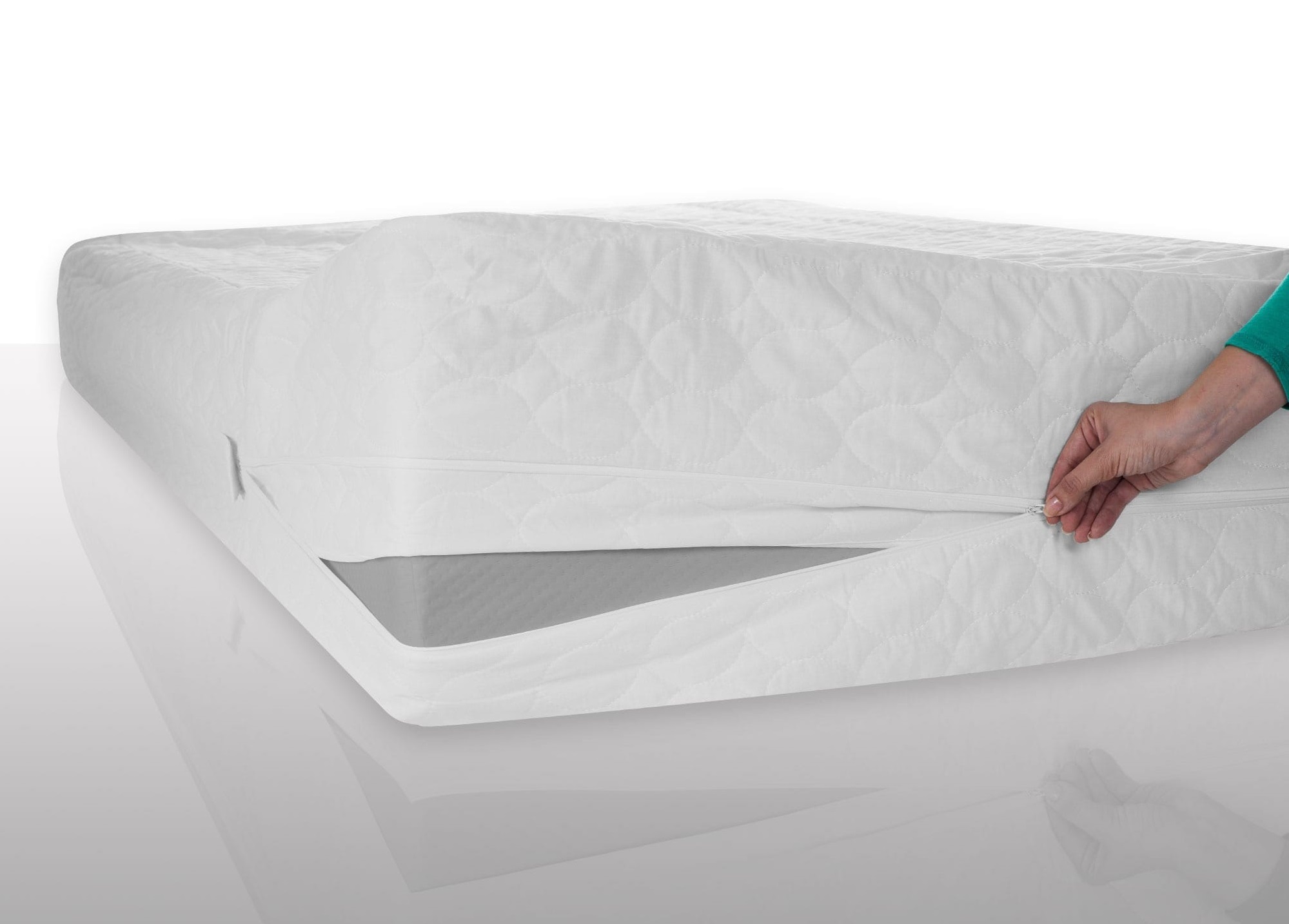
Throughout the years, bodily fluids and bed bugs take their toll on the insides of your mattress.
Sweat, like any other fluid, warps and degrades the fibrous materials inside. The inside of the mattress also provides food for bed bugs and dust mites.
The daily effects are minute, but fast forward a few years, and a new mattress all of a sudden looks lumpy and warped. An older mattress ages even more rapidly!
The first step should be to stop the aging process. Start using a mattress protector. They’re both affordable, and easy to use.
2nd Step – Evaluate the main issue
If you’re thinking of replacing your mattress, figure out what the exact problem is. Fixing, or at least masking the issue is a lot easier once it has been identified.
We’ve seen old mattresses be extended another 5 years by simply addressing the issue with one of the following:
Do you have a saggy mattress?
Is your mattress sagging – particularly in the middle?
Do the edges slope down towards the middle, forming a subtle “V” shape? This is a common problem with most mattresses, but especially so with pillow-top varieties.
A sagging mattress does not offer the support you need to sleep comfortably. The dip in the middle causes your spine to curve – resulting in achy joints, and a bad back, and makes sleeping difficult (especially for couples).
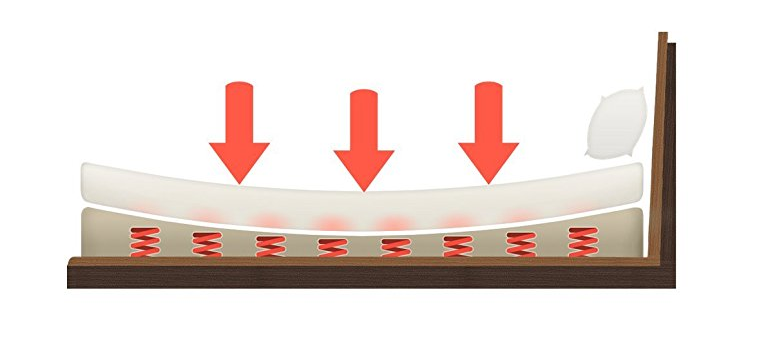
With a pillow-top mattress, this is even more exacerbated because you can’t flip the mattress over.
Few things in life are as frustrating as having an expensive (and oftentimes relatively new) pillow-top mattress that sags in the middle.
What can be done about this?
A quick and easy way to alleviate a sagging mattress is with the Under Mattress Support from Mattress Helper.
This system slides underneath the mattress and forces the middle to rise up – thereby eliminating the dip.
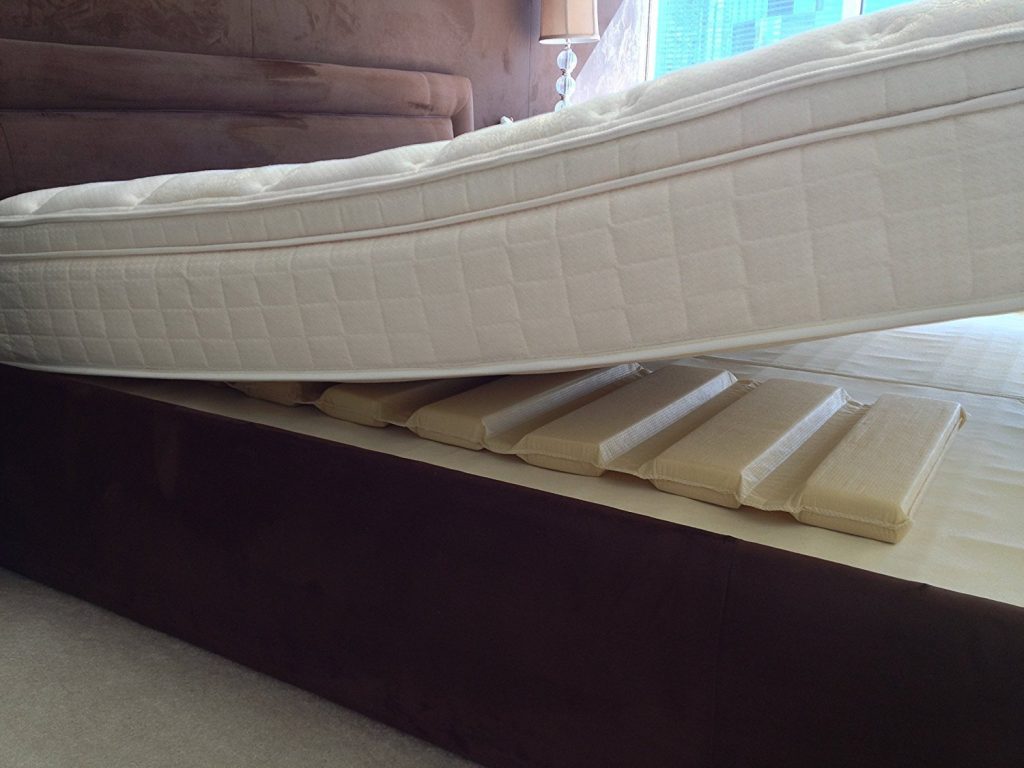
This system is very easy to install – and takes just a few minutes.
You raise the mattress up and slide the support set under the sagging section. Then just lower the mattress back down, and you’re done!
It may take a few nights to have the mattress “break in” around the Under Mattress support, but either way, it does a very effective job of alleviating the dip.
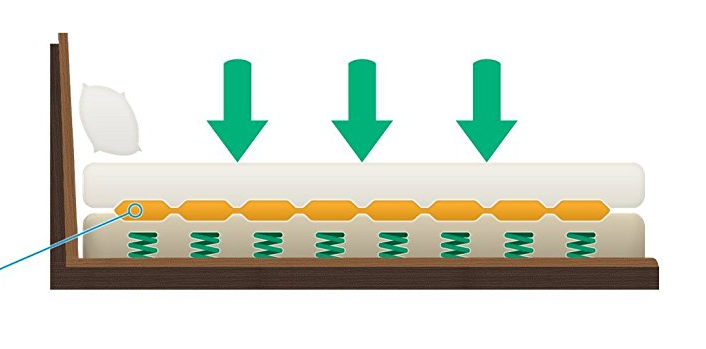
Does it no longer provide the necessary support?
If your mattress doesn’t have a sag but does feel too soft, lumpy, or mushy, a mattress topper would probably provide the best results.
The goal here is to add a firm layer on top, to mask uneven spots, and/or give the mattress surface some integrity. If things get a bit too firm, don’t worry, we’ll cover that in the next section.
Your best bet is something in the 3-4″ range.
Thinner toppers might not provide enough support (particularly for couples), while thicker toppers usually result in a “sinking” type of feeling. Thicker toppers also tend to get very hot!
A 3-4″ mattress topper, like the one below from Lucid, will provide a nice balance of support and comfort.
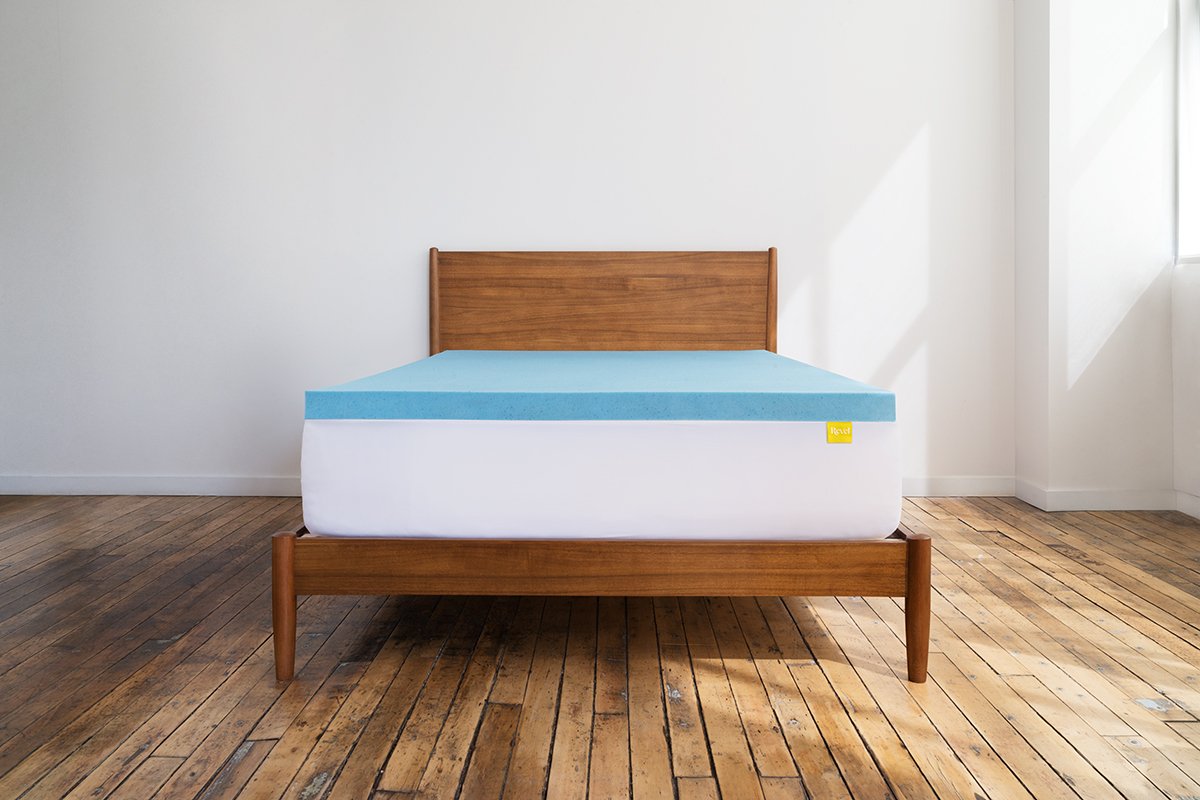
How to use one:
There are two important factors to keep in mind before you place a new mattress topper on top of your existing mattress:
1.) Your fitted sheet(s). The topper will add a few inches of depth to your mattress. Are your current sheets capable of handling the extra depth? If so, great!
If not, you should definitely consider buying an “Extra Deep” fitted sheet (or sheet set).
2.) If you’re using a foam mattress topper, take it out of the package and any wrapping, and let it air out – preferably outside.
Memory foam, because of the chemicals used during the manufacturing process, tends to have a cigarette smoke odor. Allowing it to air out for a few hours (possibly overnight), will clear this up.
Now you’re ready to place the topper on top of your mattress! First, remove your fitted sheet from the mattress; if you’re using a mattress protector, leave that in place.
Next, place the topper on top of your mattress, and align all of the edges and corners together.
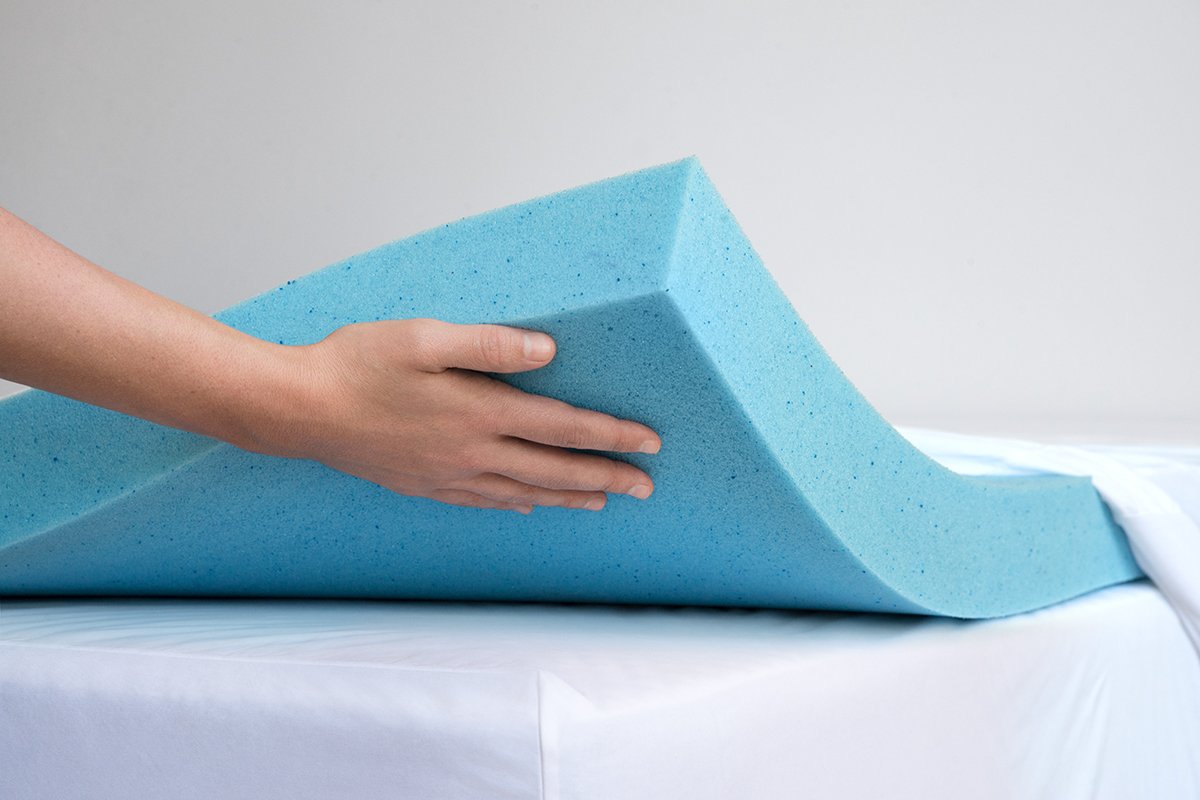
Almost done!
The final step is to just cover everything up with your fitted sheet.
Is it too firm?
Sometimes, a mattress is just too firm. In which case, your mattress might not even be that old – it was just uncomfortable from the start.
You don’t have to spend hundreds (or thousands) to replace it with a new mattress – you’ve got some options!
A mattress pad or a feather bed is definitely an effective option. If you don’t know which to choose, click on the blue link to find out in detail which is best for you. We’ll sum it up below.
The case for a mattress pad
A mattress pad is great if you just want or need a thin layer of comfort. If you prefer a firm sleeping surface, but your’s is just a bit too firm, a mattress pad will provide just enough softness to make things comfortable.
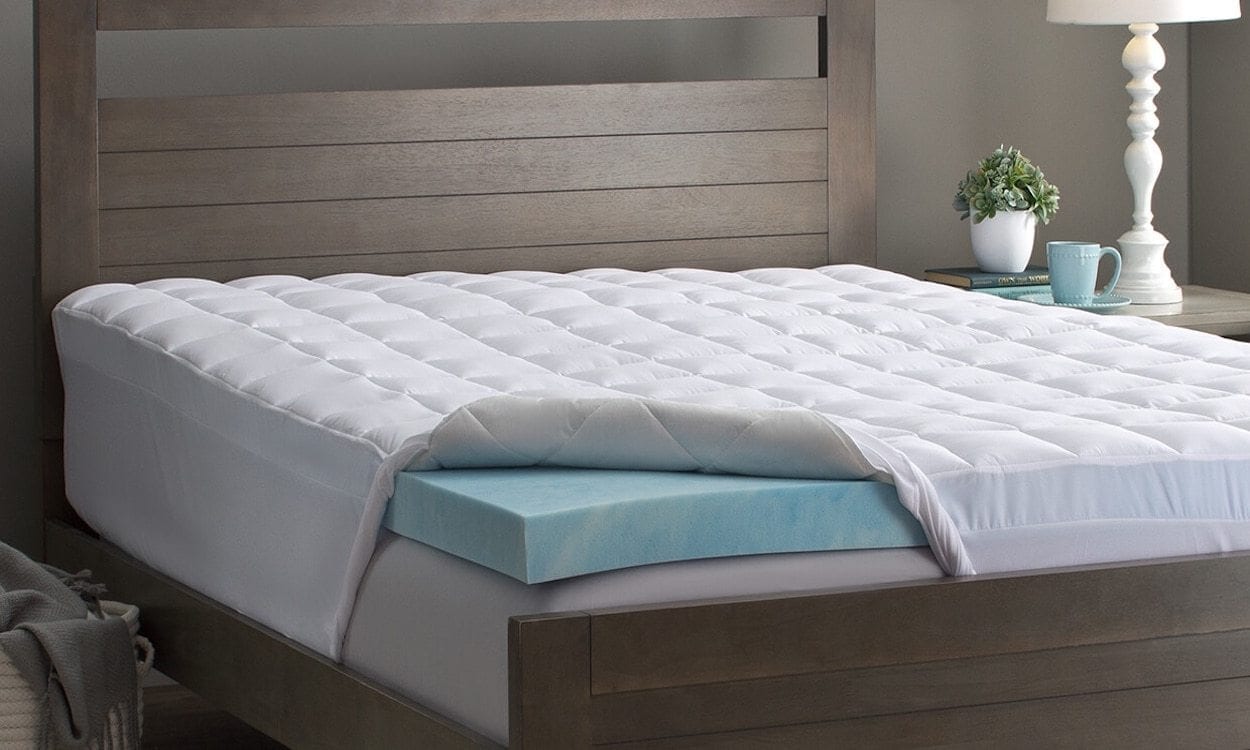
A mattress pad is also useful when you need to hold layers in place (like a mattress topper).
And, a waterproof mattress pad will also add a layer of protection if you don’t have a mattress protector in place.
The case for a feather bed
On the other hand, if you want to completely transform your mattress, nothing beats a feather bed. If you want to feel like you’re sleeping in a hotel bed, of course, a feather bed is a must.
A feather bed provides that cloud-like comfort that no other bedding accessory can match.
If you choose to go with a feather bed, we would recommend topping it with a thin mattress pad to keep it in place. The variety with anchor bands is the best option.
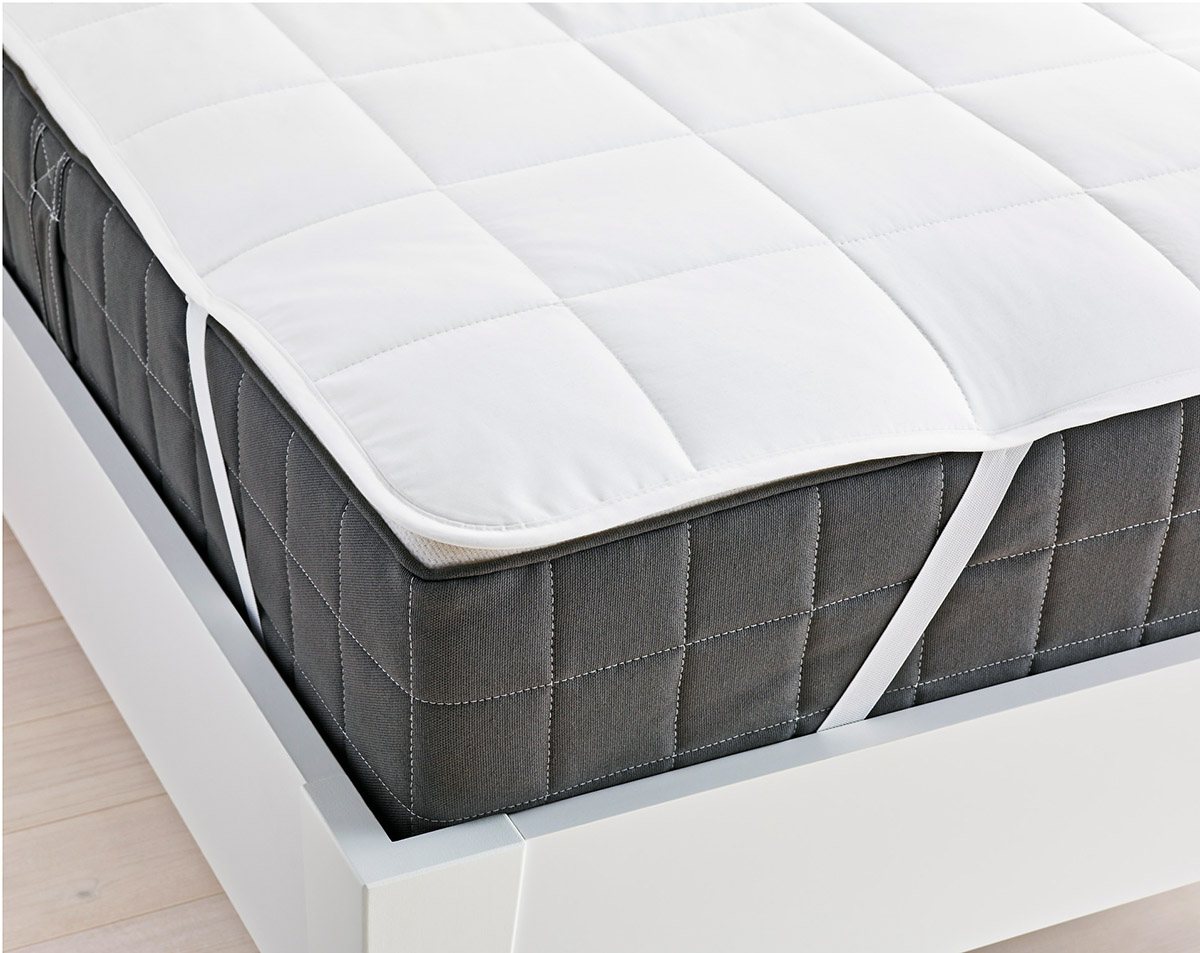
Final thoughts
Whether you’re trying to revive an old and worn-out mattress, or if you just want to make up for a poor mattress choice, you have options!
If your budget doesn’t have enough room for a brand new mattress, the tips above should easily solve your mattress problems. All of the suggestions above, for example, are affordable and very easy to implement.
